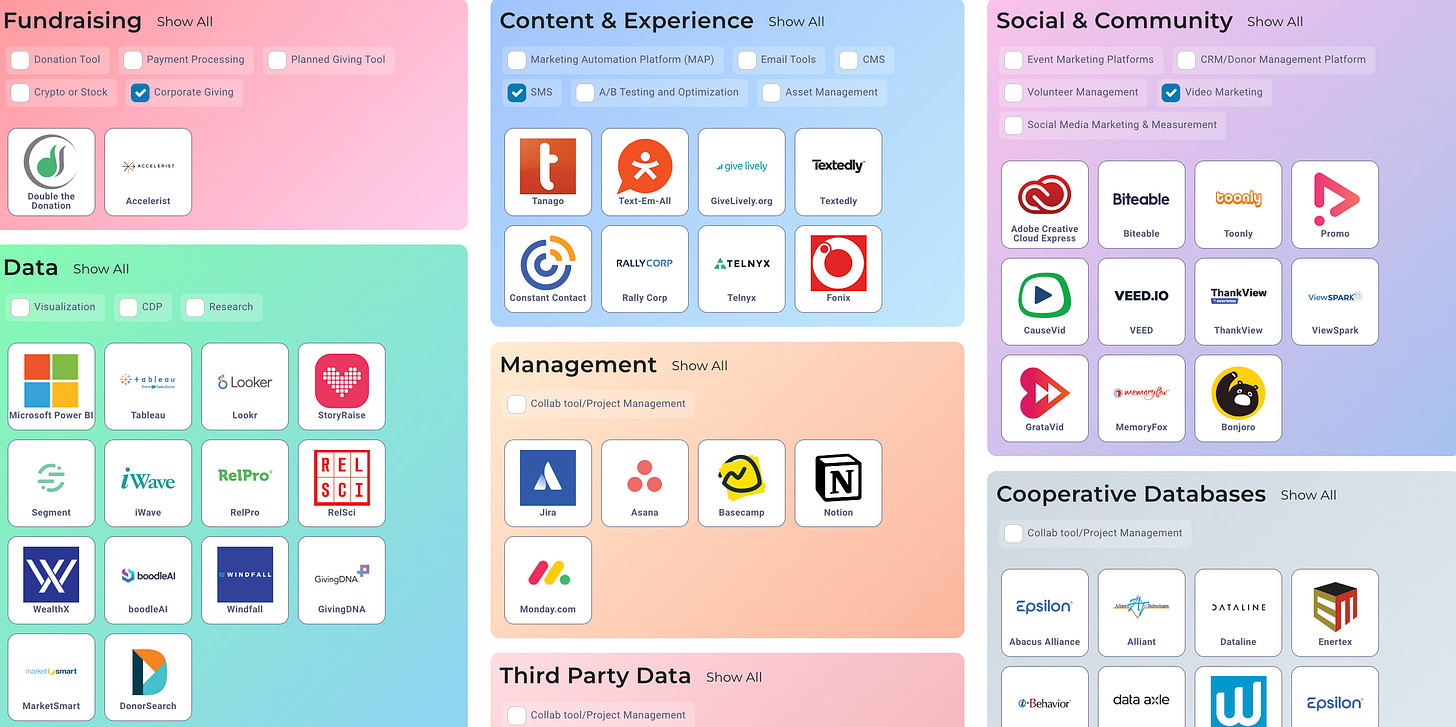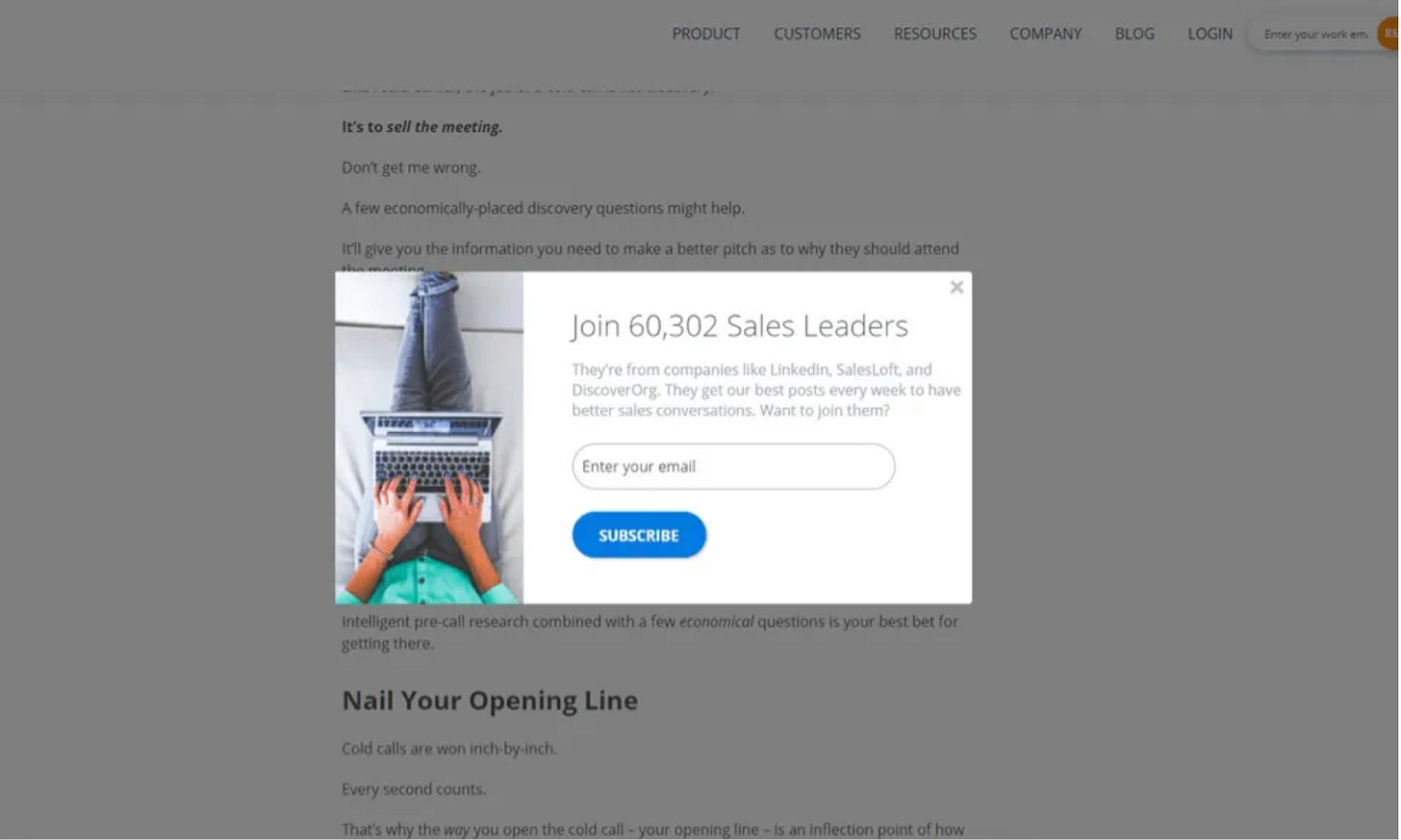118. SPN
How to upgrade your email workflows; Measuring incremental channel lift; and jobs
A very warm welcome to all the new subscribers. I’m thrilled to have you as readers and truly appreciate your feedback and support.
“A picture is worth a thousand words” is an adage in multiple languages meaning that complex and sometimes multiple ideas can be conveyed by a single still image.
The same can be said of the visualizations in the new Performance section of Fundraise Up’s Insights tab. They bring a lot of clarity to my work. And the donor heat map is a particular favorite. Check it out.
Game changer? You know it is!
In this week’s SPN:
Upgrade your emails with these workflows ahead of EOY
How to track and measure incremental channel lift
The best way to validate new channels
Jobs that took my fancy this week
In last week’s edition of SPN I sketched out how I test new channels, and used YouTube influencers and podcast ads as examples. I also teed up that in today’s SPN I’d write a Part 2 to testing new channels and double click into measurement, attribution and incrementality.
So let’s jump in.
Establishing Incremental Lift vs the Status Quo
To level set, there are different ways to look at measurement.
There isn’t and shouldn’t be one way to measure if you want a rich picture of your combined tech, media and data efforts.
The three main ways are:
Click-based or MTA - Multi-Touch Attribution, which is attribution based on clicks or the donor journey (as best as the platforms can track it).
MMM - Media-Mix Modeling, which uses regression models that spit out an outcome based on historically modeled data.
Incrementality Testing - Understanding the incremental lift of a channel, past the baseline it would’ve driven regardless.
When it comes to launching new channels, the most important thing you have to do is track and measure the incremental lift from a new channel.
Know that every platform is going to over (or under) report their numbers.
7 out of 10 times you look at an in-platform number, it’s an over-reported figure, hence me being a fan of understanding incremental lift. Context is important.
As you begin to spend, especially in a new channel, you want to understand the incremental lift vs the status quo of what you’re doing today and how your new ad channels compare to your existing ads that are running right now.
How? Run a test with a holdout /control.
I recently used a tool called Haus for some incrementality testing and I liked it a lot - easy to use, does what it says on the tin. Work Magic is another platform I’ve used.
In practice:
Input any channel as the channel you want to run an experiment with (could be the YouTube example from last week or a native ad play, like Taboola)
Setup the 2 or 3 cell experiment that’s available in either platform
Connect any offline data (e.g. donation reports you get from any third party platforms)
Let Haus/Work Magic/whichever platform run the experiment and then assign an “Incrementality Factor” to each channel.
The incrementality factor is a multiplier you use to adjust your platform reported conversion numbers for incrementality.
For example, if YouTube has an Incrementality Factor of 1.5x (because the platform doesn’t count for its view-through conversions), then the platform’s reported CPA of $150 is really $100, taking into account the incrementality the platform drives.
Ahead of EOY, as your teams begin running Meta ads and thinking about adding podcast, YouTube, programmatic banners, Taboola and more to the mix, encourage them to run proper incrementality hold-out tests. It’s the best way I know to validate new channels.
Explore: Build Your Tech Stack (link)
Searching for new tools or trying to trim down your tech stack? Play around in this infographic. I add to it most weeks.
Jobs & Opps 🛠️
UNICEF UK: Digital Product Manager (£44,500)
Girl Scouts of the USA: VP, Development Management & Operations ($122,700 - $215,000)
American Heart Association: Brand Marketing Manager
Salvation Army (SC): Digital Marketing Specialist ($75,000 - $85,000)
British Red Cross: Senior Operations & Performance Measurement Manager £43,123 - £47,773 (plus London Weighting of £3,344, if applicable)
Oxfam, America: Manager, Editorial & Content ($112,000 - $117,000)
National Trust: Head of Fundraising Operations (£70,000)
Sandy Hook Promise: VP, Marketing ($160,000 - $180,000)
World Vision: Channel Campaign Manager, Gift Catalog (Direct Marketing) ($77,500 - $94,000)
—> Many more jobs can be found on Pledgr.com 🎉
Email Workflows to Build Ahead of EOY
Let’s talk about something near and dear to every Org’s heart: email flows!
If you’re not fully leveraging these flows, you’re leaving serious amounts of fundraising dollars on the table.
These are my must-have email flows that every Org needs to set up ASAP. They’ll help automate your marketing, build better relationships with your donors, and ultimately drive more fundraising revenue - without you having to lift a finger once they’re up and running.
Start with a Killer Popup
It all begins with a high-converting popup on your website. Before you can send any emails, you need to capture those emails!
Every dollar spent driving traffic is wasted if you’re not turning those visitors into at least prospective donors you can remarket to later.
When setting up your popup, include the following:
• Ask for the basics: name, email, and phone number. This gives you two channels to reach people.
• Offer value: Whether it’s a Match, a gift with donation, or a lead magnet, make sure you’re offering something worth their email.
The fact this is an example from Gong is immaterial. The popup is simple and the copy is very strong. They relied on two versions of the same technique: social proof.
In the headline, they suggest that a lot of users have already joined the list (Wisdom of the crowd effect) while the body relies on Expert social proof. Who wouldn’t like to join employees from LinkedIn and Discovery.org?!
Set Up Your Post-Donation Email First
The post-donation confirmation email is one of the most important flows to set up, even before the Welcome Flow. This is the email that ensures your donor immediately feels reassured and valued after making a donation.
What should it include?
A Thank You Note: Personalize it with their name and a warm message.
Donation Details: Recap what they donated, total cost, and anything relating to the program if it was a restricted or in memory of someone.
Delivery & Shipping Info: If you had a product included in the donation offer let them know when to expect their order and provide tracking details once it ships.
Not only does this reduce donor service inquiries (“When’s my package arriving?”), but it also builds trust early on.
Welcome Flow
Once you’ve got the post-donation email squared away, your next priority should be the Welcome Flow. This is your big chance to introduce your Org, share your story, and build trust with new Supporters. It’s your Org’s first “date” with a potential donor.
Here’s how I like to structure it:
1. The Icebreaker: Introduce your Org, share your mission, and set expectations for future emails. Timing: Send this right after someone subscribes or makes a donation.
2. Why We’re Different: Highlight your unique value proposition. Include a donation ask or upgrade to monthly. Timing: 48 hours after the first email.
3. Program Showcase: Introduce some Programs with social proof, like testimonials from beneficiaries or donor-generated content. Include a donation ask or upgrade to monthly. Timing: 72 hours after the second email.
4. Social Proof: Bring in donor reviews, press mentions, or influencer shoutouts to build trust. Include a donation ask or upgrade to monthly. Timing: 72 hours after the third email.
5. Last-Chance Match: If they still haven’t donated, hit them with a strong offer to seal the deal. Timing: 1 week after the fourth email. (This Match offer could be a very interesting proposition to sell as an option into a Corporate Partner looking for sponsorship/partnership opportunities).
I was on Dd Black looking to purchase a gift recently and opened their welcome email partly because the subject line was: “Smile, you’re now part of Db Black”. The welcome was warm and I liked how they briefly introduced the people comprising its community - travelers. It also left me in no doubt as to what they did and could offer me.
Winback Flows
These are not just for sales teams.
Cart abandonment is a huge missed opportunity. I haven’t just seen research that shows more than 50% of online donation carts are abandoned, I’ve experienced it! And Winback flows help recover a chunk of that lost revenue.
Here’s what you need:
Browse Recovery: Target visitors who browsed but didn’t add to cart.
Cart Recovery: Remind visitors who added items to their cart but didn’t complete checkout.
Checkout Recovery: Nudge shoppers who started but didn’t finish checkout.
SPN Tip: For cart and checkout recovery emails, test offering a Match or free shipping (depending on your Org’s offering). For browse recovery, a friendly reminder is usually enough.
Post-Donation Upsells
After someone has made a donation, don’t just sit back and wait.
A post-donation upsell to monthly giving email, sent 1-5 days after a donation, can increase your donor LTV exponentially. This can be fully automated. It’s a must.
Audience Segmentation
Segmentation is where email marketing gets truly powerful. Use RFM (Recency, Frequency, Monetary value) to target specific customer groups for more personalized emails.
When thinking about segments, consider these 3 things:
Recency: how recent a donor’s last donation was (it could also refer to when you sent them their last email).
Frequency: how frequently they donate.
Monetary value: how much they donated within a given time period.
Each of these are filters that you can segment by for more targeted marketing campaigns.
There are so many ways to segment Supporters but you should definitely be segmenting based on general email engagement (i.e opens/clicks) and then excluding segments from new emails after they take the action you want them to take within any of these flows.
Segments are a complex but important topic so maybe I should write an SPN on this in the future. If you need help, you know where to find me.
That’s all for today!
If you enjoyed this edition, please consider sharing with your network. Thank you to those that do.
If a friend sent this to you, get the next edition of SPN by signing up below.
And huge thanks to this Quarter’s sponsor Fundraise Up for creating a new standard for online giving.
Reads From My Week
GenAI Doesn’t Just Increase Productivity. It Expands Capabilities (BCG)
If you want to understand how to think about prompt engineering here’s an hour long talk with 3 of the top prompt engineers at Anthropic (X, Alex Albert)
13 Years at Snap Inc. the note Snap CEO Evan Spiegel sent to team members on September 3, 2024 (Snap)
Gen Zalphas and Tilt-ing the Playing Field - the emerging young consumers and how they may reshape commerce (LinkedIn)
DeepL AI: The Problem with Thought Leadership (The Problem with B2B Podcast)
Google introduces YouTube creator-based audience targeting - you can now create remarketing audiences based on specific YouTube creator videos, expanding targeting options beyond your own channel (Search Engine Land)





